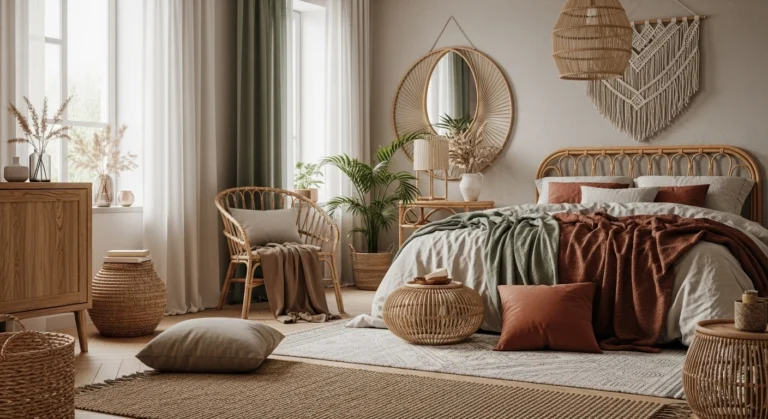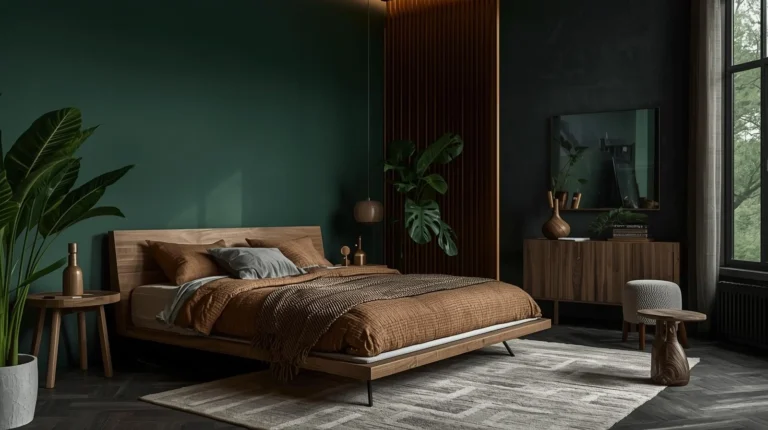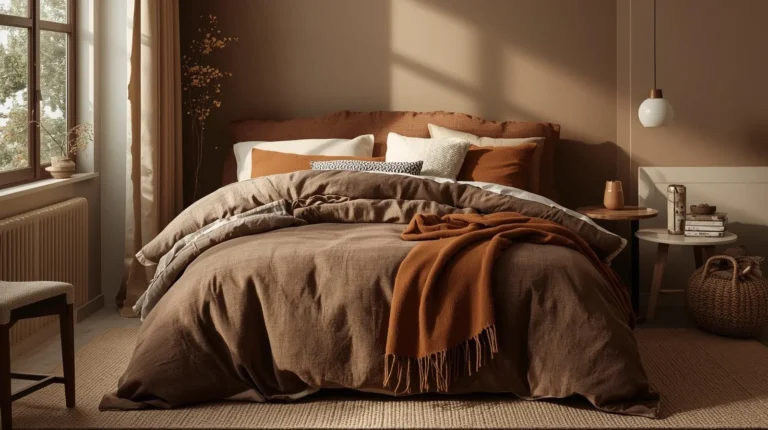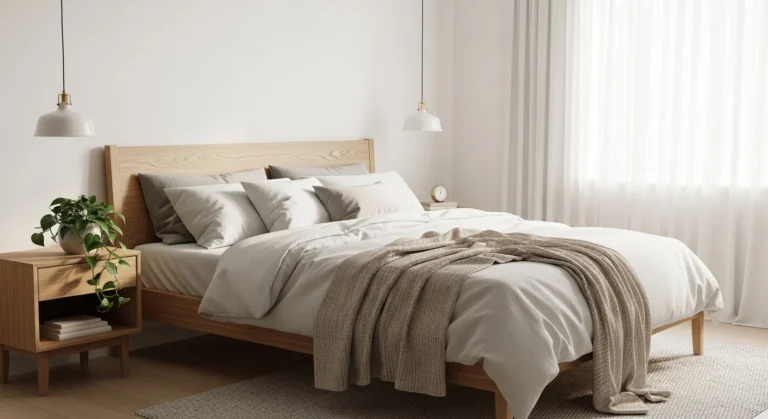How Should You Use Coastal Decor in Your Bedroom? (15+ Timeless Coastal Bedroom)
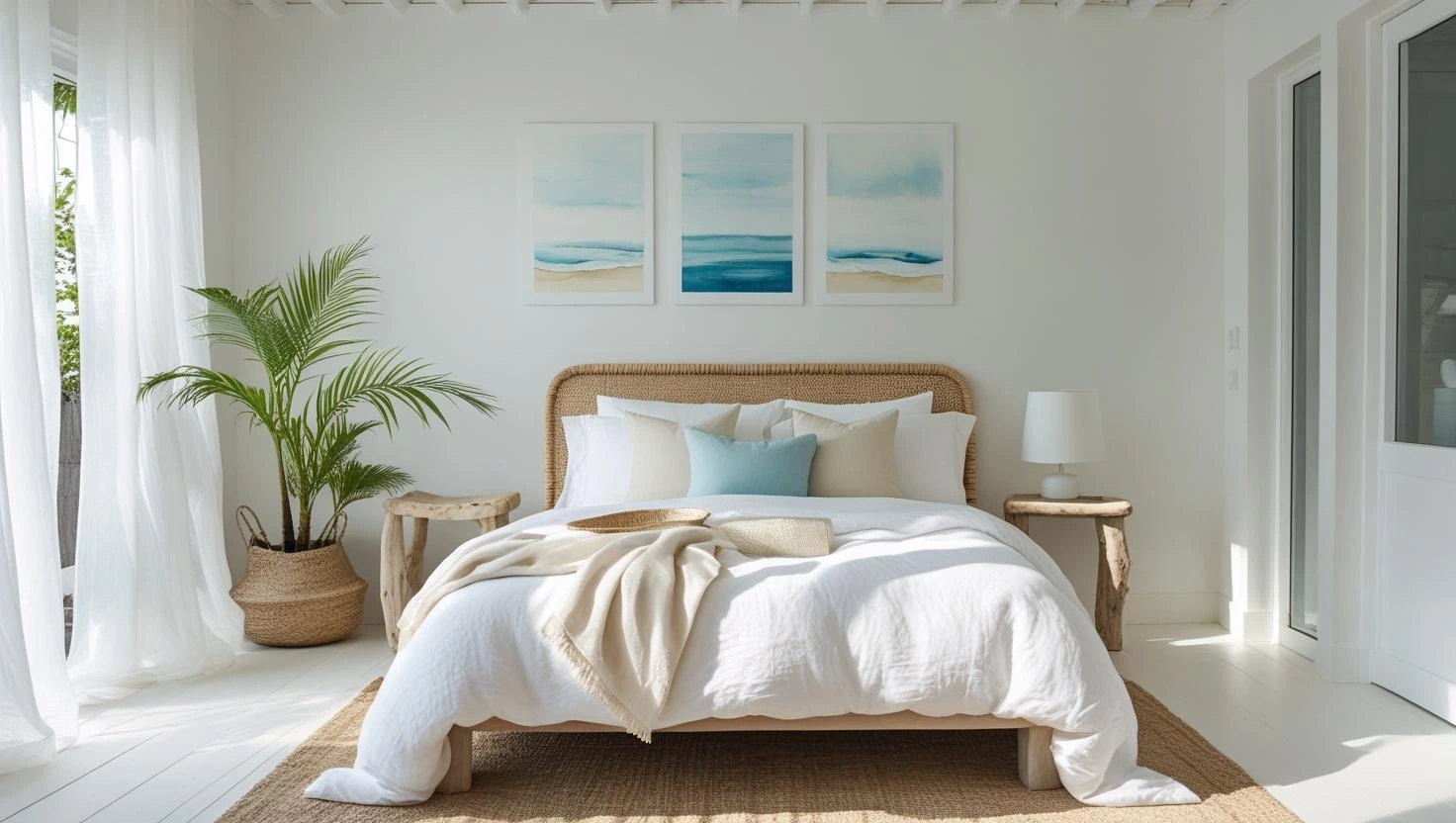
1. Start with a Calm Base that Feels Like Sand and Sea
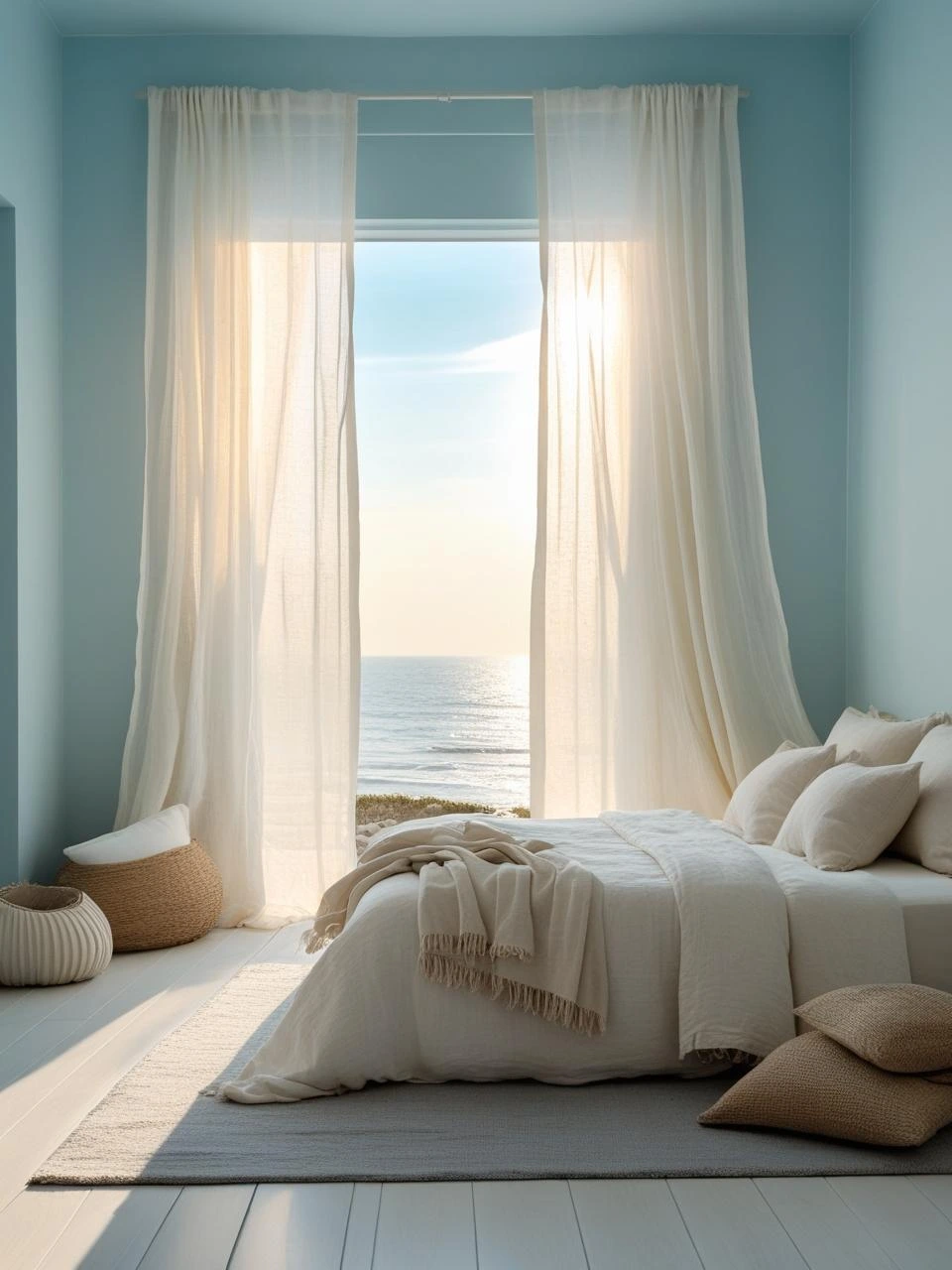
When you step into a coastal bedroom, the first thing you should feel is peace. You need some soft colors to achieve and feel that feeling. Think of the sky early in the morning or the sand when the sun is just rising. These colors are easy on your eyes and calming for your mind. Use pale blue, soft beige, off-white, and hints of gray. The goal is to make the walls feel like a big breath of fresh air. These tones help everything else in the room feel natural and simple.
Most people overdo it by adding too many beachy items. But real coastal style is not about filling the room with anchors and seashells. It’s about how the whole space feels—like you’re near the water, even if you’re far from it.
2. Use Real Materials That Look and Feel Like the Coast
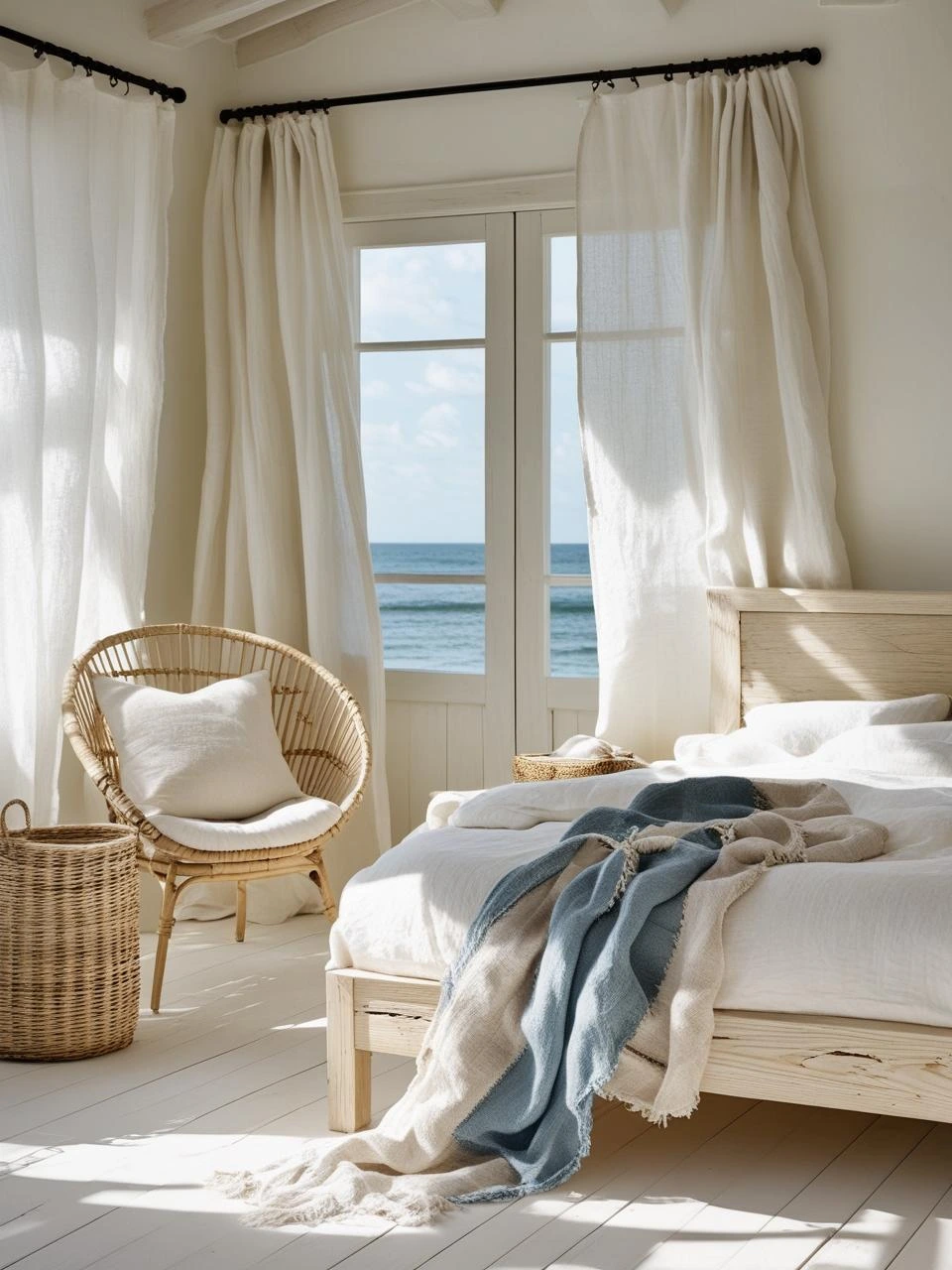
Coastal bedrooms are built around texture. Think driftwood, linen, cotton, and light rattan. These things feel honest. If your bed frame is wood, let it show its grain. If you use throws, choose cotton or something with a loose weave. Let the materials do the talking. They don’t need to be fancy.
Natural elements have a quiet strength. A rattan chair in the corner, a wicker basket near the bed, or a light wood nightstand can say “coast” better than a printed sign ever could. The magic comes from choosing things that look like they could have been shaped by wind, water, and sun.
3. Keep Your Bed Light, Layered, and Breezy

Your bed is the heart of the room. Try to not make it heavy to give it a coastal feel. You want it to feel like you could nap there after a swim. Use white or pale bedding as your base. Then, add soft layers—maybe a thin quilt, a lightweight throw, or a few textured pillows.
The key is not matching too perfectly. Coastal bedrooms are relaxed, not stiff. A simple, wrinkled linen duvet or a handwoven throw gives your bed the feel of a lived-in beach cottage. If it looks a bit undone, that’s perfect. That’s how the coast is—never polished, always inviting.
4. Let Light Move Freely Through the Room
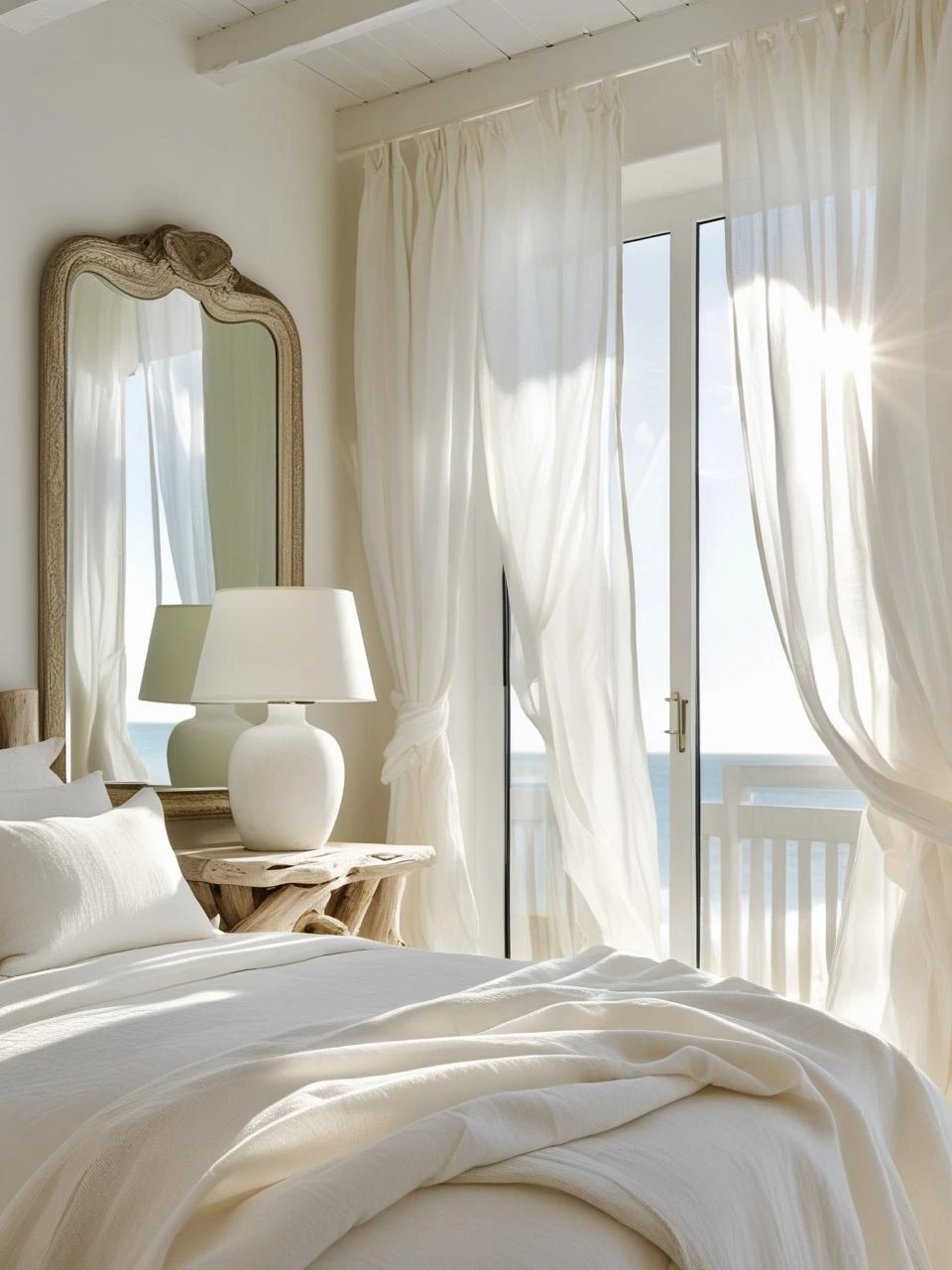
Natural light from coastal design elements is an important part of this. It makes everything feel open, clean, and real. If your windows have heavy curtains, trade them for sheer ones. If your room is dark, place a mirror by the window. It bounces the light around and makes the space feel bigger.
This light doesn’t have to be just sunlight. Even your lamps can help. To not feel too yellow you can use soft, warm bulbs. A light wood or ceramic lamp base with a simple white shade can blend in perfectly. The goal is to create glow, not glare.
5. Pick Art That Whispers, Not Shouts
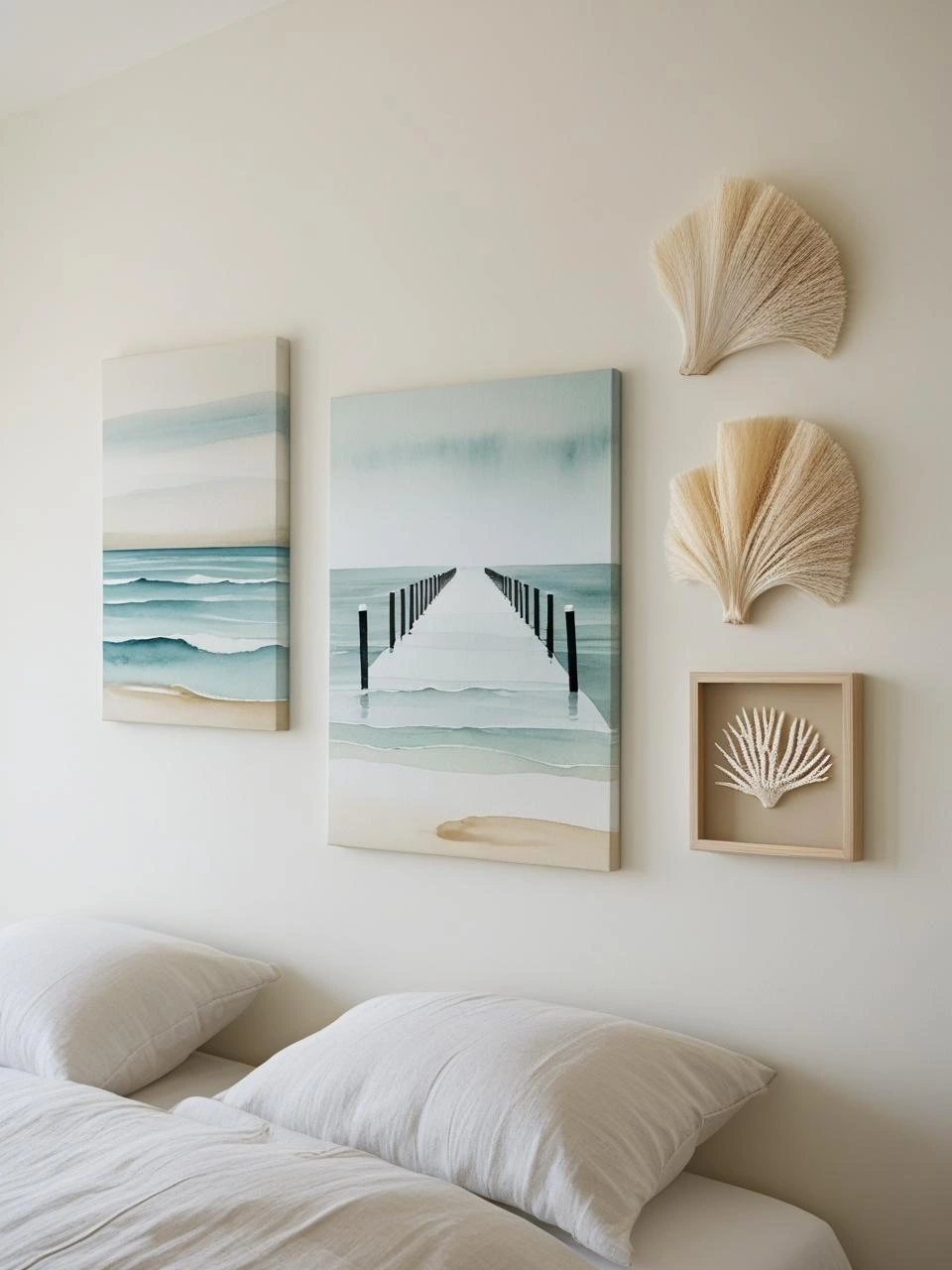
Wall art should feel like a gentle wave—calm and soft, not loud. You don’t need a big painting of a beach. Instead, go for simple pieces. Maybe a soft watercolor of the sea, a black and white photo of a pier, or even abstract prints in sea colors.
You can also frame natural things. A piece of coral, a dried palm leaf, or a set of pressed sea grasses. These can be more powerful than mass-printed signs that say “beach life” or “relax.” When you choose art that’s quiet, it lets your room speak in a softer voice.
6. Add Touches of the Ocean Without Going Overboard
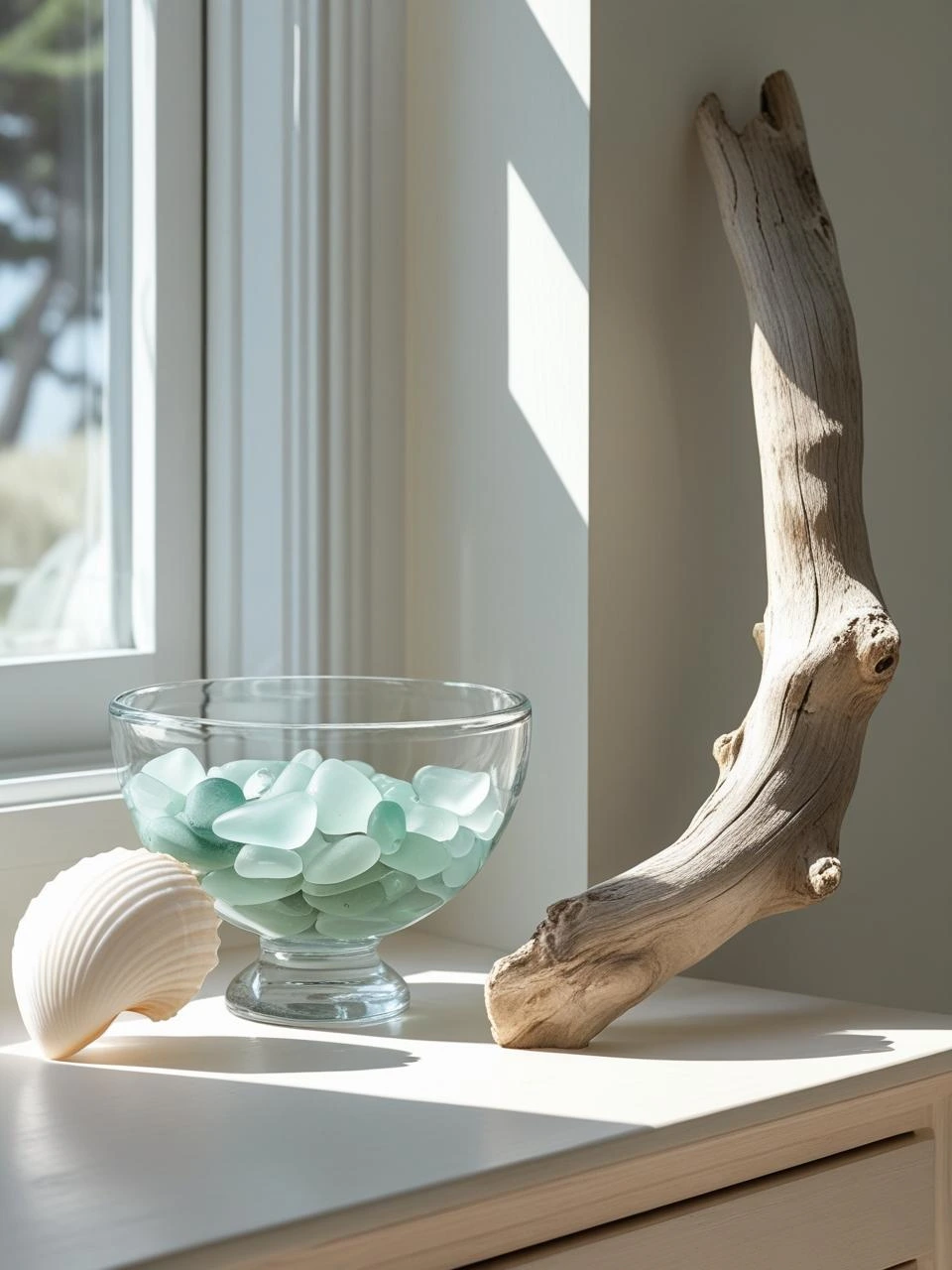
A shell here. A bowl of sea glass there. A driftwood branch leaned against the wall. These touches are enough. You don’t need to fill the space with lighthouses and nets.
The trick is to include items that feel like they were found, not bought. This means fewer gifts and more natural pieces. If you do use a shell or coral, place it in a spot where it gets light. Let it stand out instead of blending into clutter.
7. Keep Furniture Simple and Weathered

Coastal bedrooms don’t need bold furniture. In fact, the best pieces often look like they’ve been gently worn by time. A whitewashed dresser or a bleached wood nightstand can make the whole room feel softer.
Don’t go for shiny finishes or dark colors. Light woods, faded paints, or even pieces that show chips or knots work better. They remind you of beach homes that have stood by the shore for years—always welcoming, always real.
8. Let the Room Breathe with Open Space
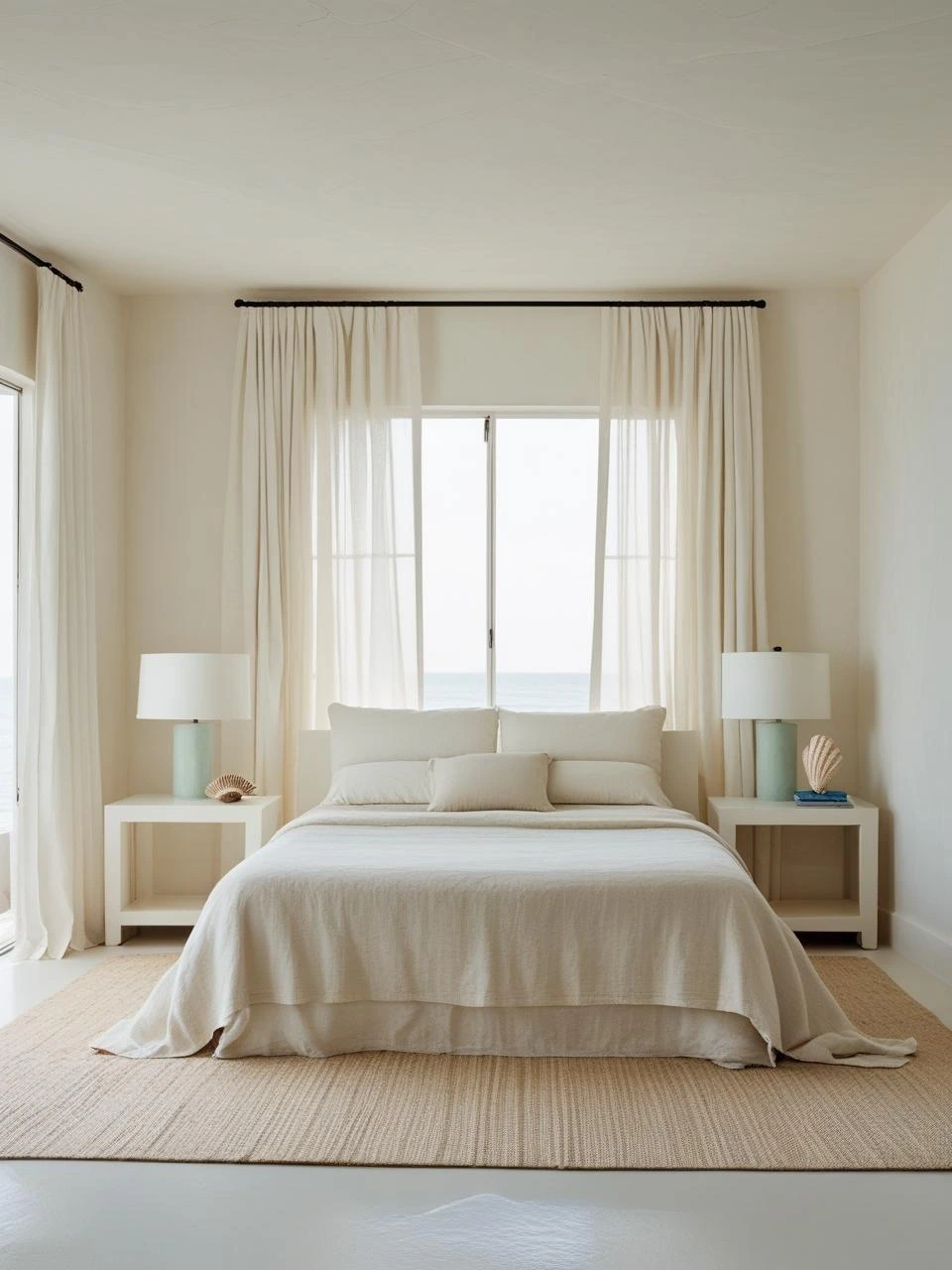
Clutter kills coastal design. You want space to move, to relax, to breathe. If you fill every surface, the room starts to feel cramped. It’s the opposite of what the ocean feels like
Leave open space around your bed. Don’t overfill your nightstands. Let the floor show between rugs. This negative space is just as important as the things you add. It’s what lets the beauty of each piece really shine.
9. Choose Rugs That Feel Like Barefoot Walks

Think about how sand feels under your feet. That’s the feeling your rugs should give. Natural fiber rugs—like jute or sisal—fit the coastal look perfectly. They’re textured but not scratchy. Their warm tan color works with every shade of blue and white.
You don’t need a big, heavy rug. Even a small one at the side of the bed can do the job. Layering a light cotton rug on top of a jute base can bring extra softness too. Just make sure it still feels open and breathable.
10. Mix in Soft Blues the Right Way
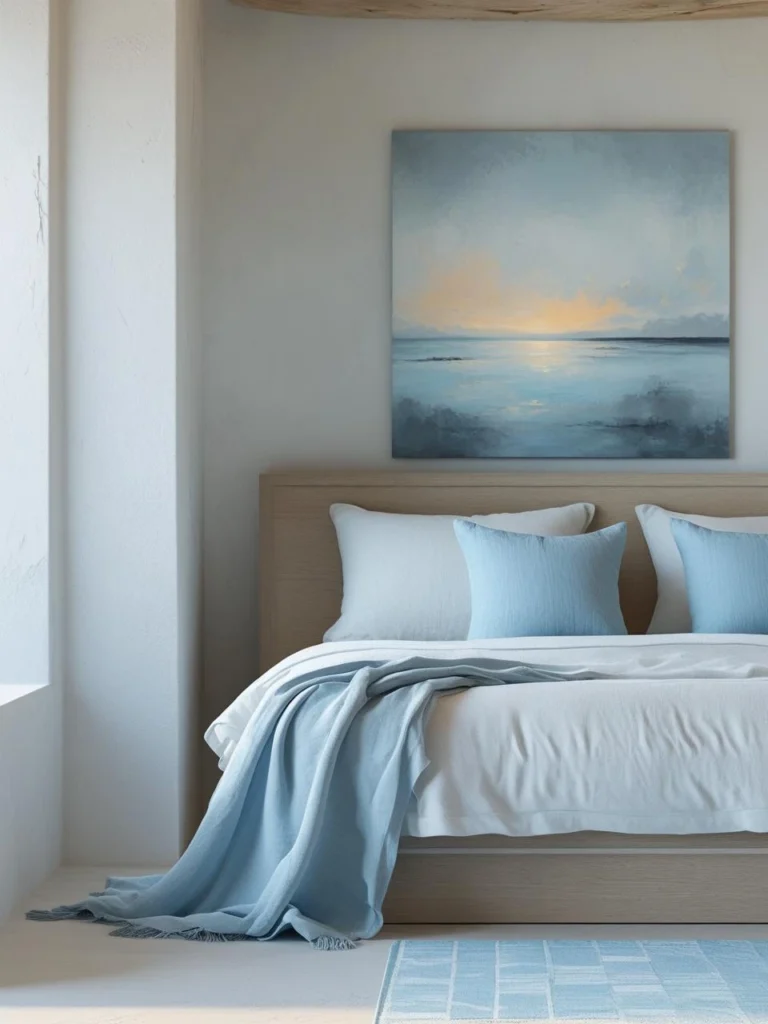
Blue is the color most people think of when they imagine the coast. But you don’t want a cartoon ocean. Use soft, washed-out blues—like the sky right before sunset or the color of shallow water near the shore.
You can add these blues through pillows, artwork, throws, or even a soft rug. But use them gently. If everything is blue, it stops feeling special. Blue should be an accent, not the base.
11. Add Small Touches of Green That Feel Like Nature
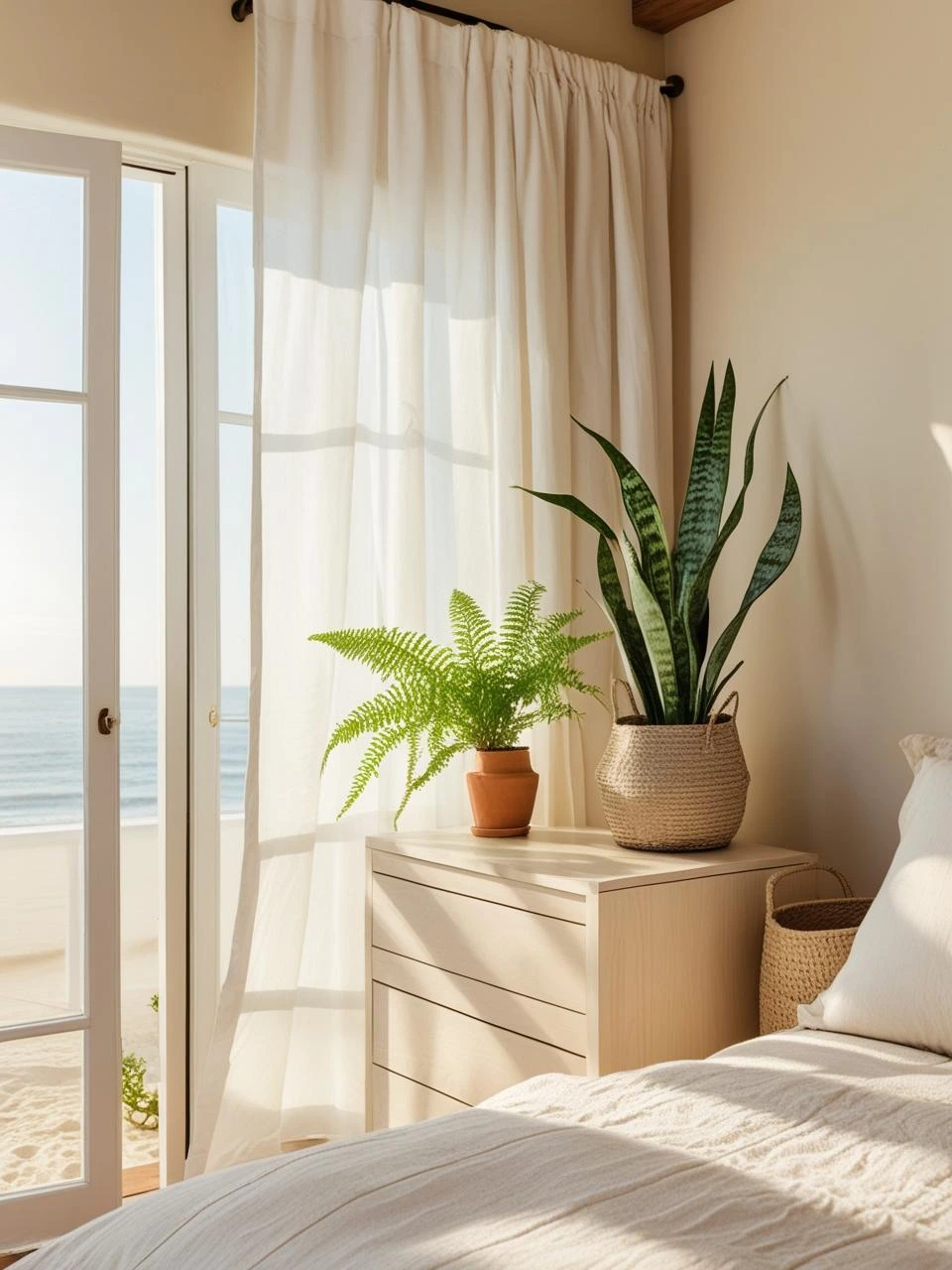
A coastal room isn’t just sand and sea—it’s also grass, palm leaves, and vines. A little green goes a long way. Add one or two plants, not a whole jungle. A small potted fern on the dresser or a snake plant near the window can bring life into the space.
You don’t need fancy planters. A plain clay pot or woven basket works better. The plant itself should be the focus. Just like the ocean, nature speaks best when it’s not forced.
12. Use Scents That Match the Feel of the Room
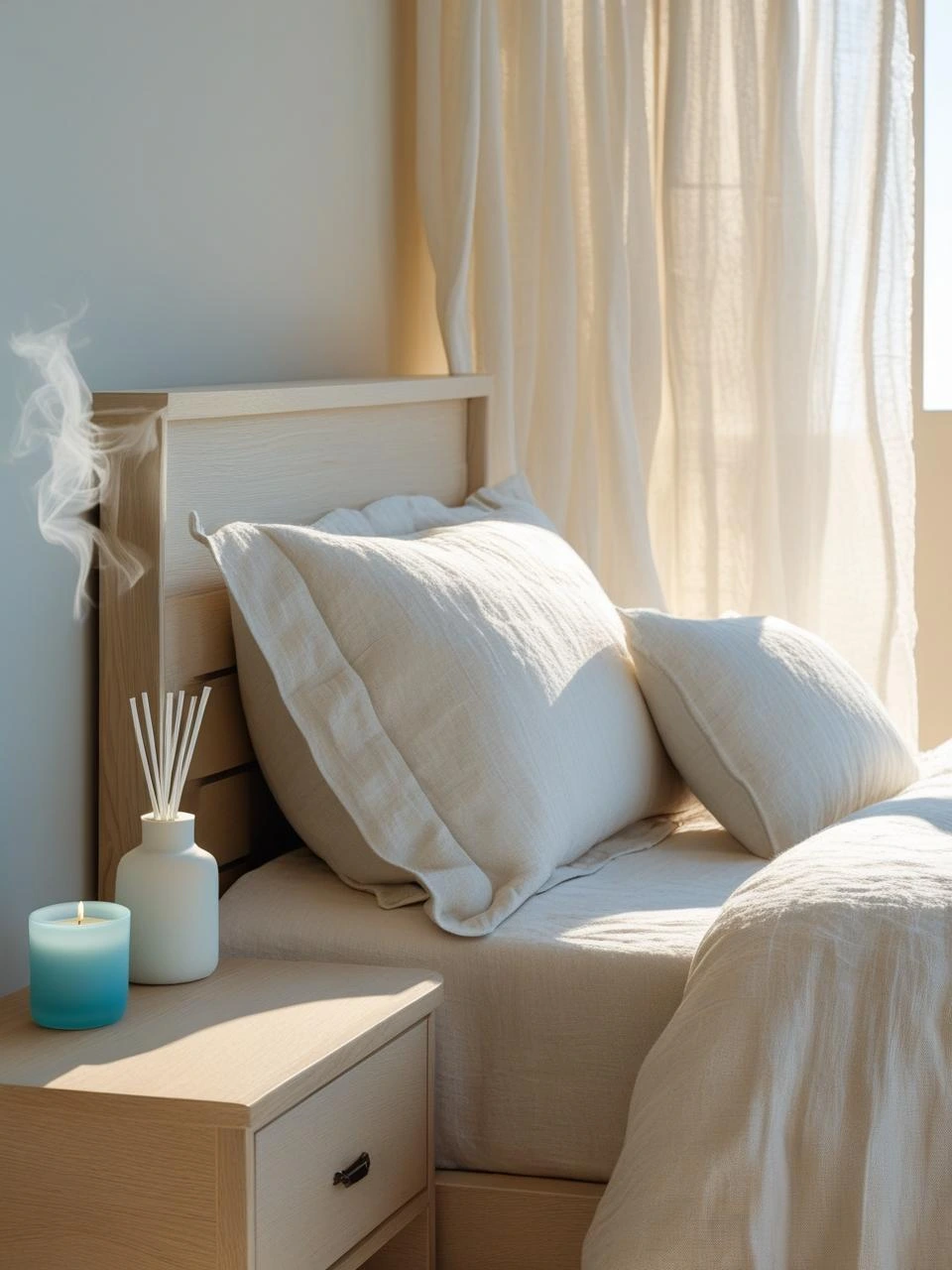
Coastal design is about more than how a room looks—it’s also about how it feels. Scent plays a big role. Use light, clean scents like sea salt, cotton, or eucalyptus. You don’t want anything too sweet or strong.
A small diffuser or a simple candle is enough. The scent should make you feel like you’re near water, with a breeze coming in. When you walk into the room and take a breath, it should calm you.
13. Make Your Bedroom Feel Like a Retreat, Not a Theme Park
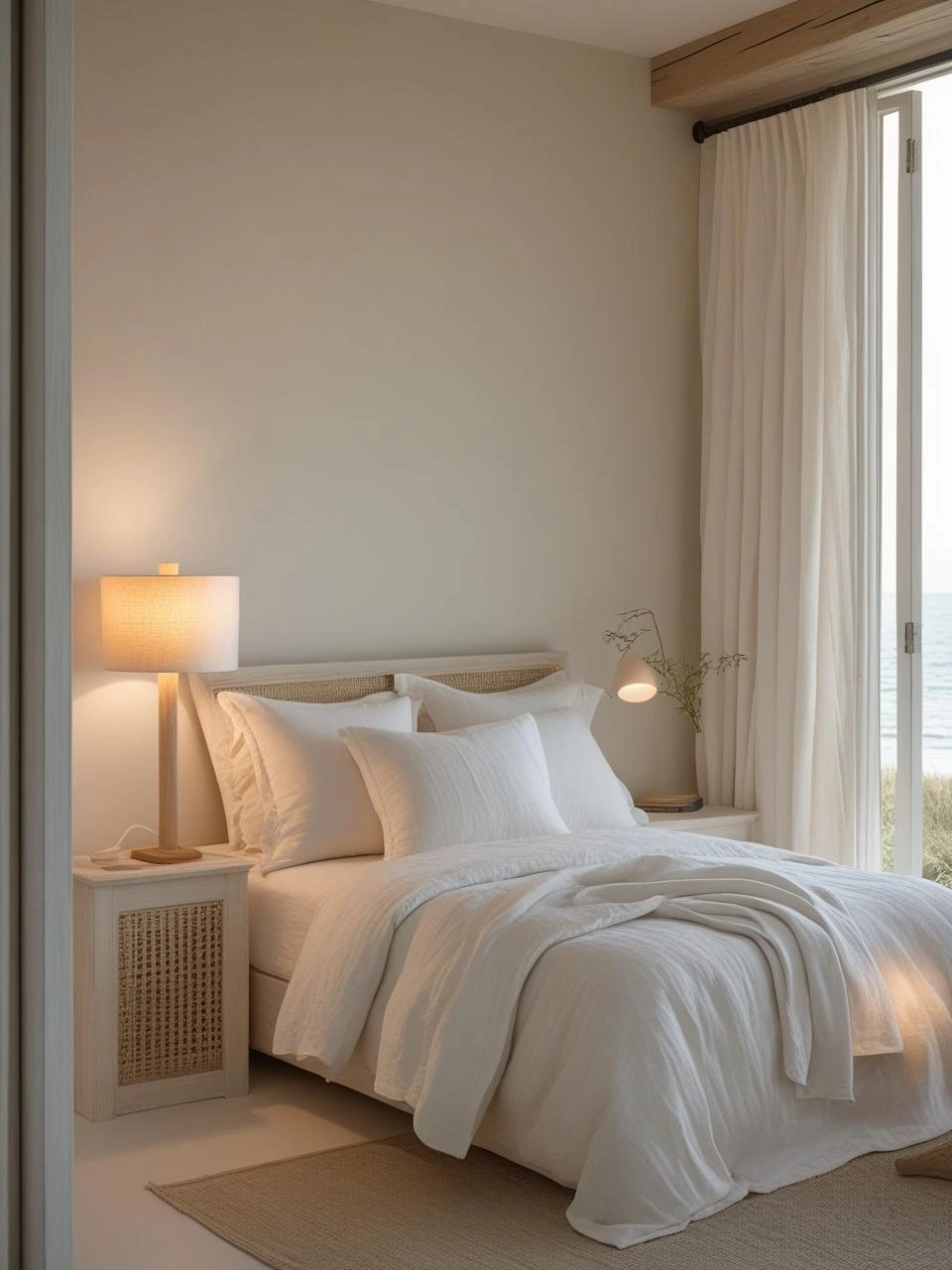
A mistake many people make is turning coastal design into a theme. They add too many signs, bold prints, or fake fish. But a true coastal bedroom feels more like a quiet retreat than a boardwalk shop.
Everything in the room should help you rest. That means soft lighting, gentle colors, and nothing too bold or busy. When in doubt, leave it out. A clean, open space says “coast” more clearly than decorations ever could.
14. Add One Piece That Feels Deeply Personal
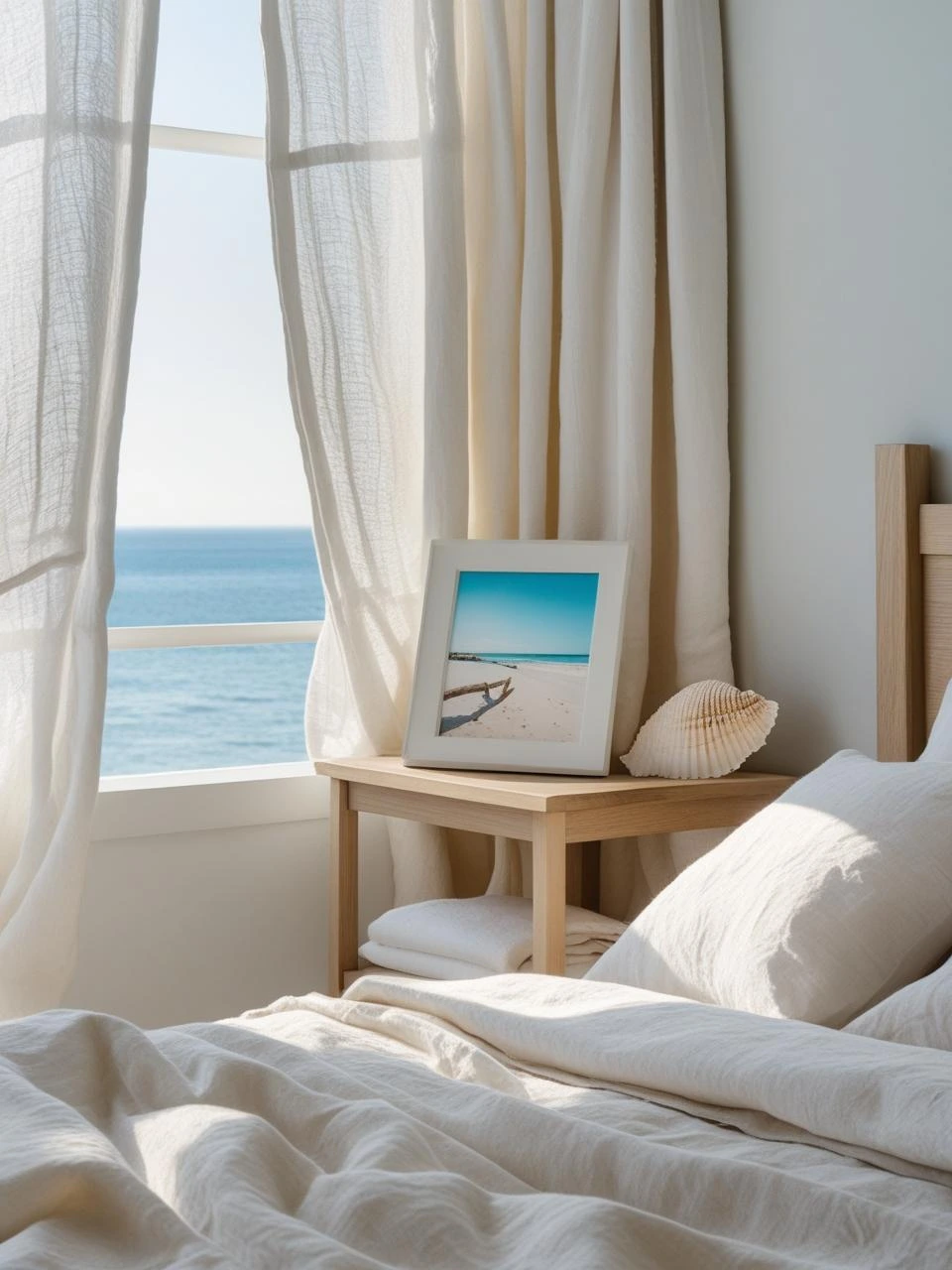
Every coastal bedroom should have something that means something to you. Maybe it’s a photo from a beach trip, a piece of driftwood you found, or a shell your child picked up. That’s what makes the room yours.
Coastal design should never feel like a copy of someone else’s space. It should remind you of your own story with the ocean, even if that story is just a dream of going there one day.
15. Let the Room Grow Like the Tide
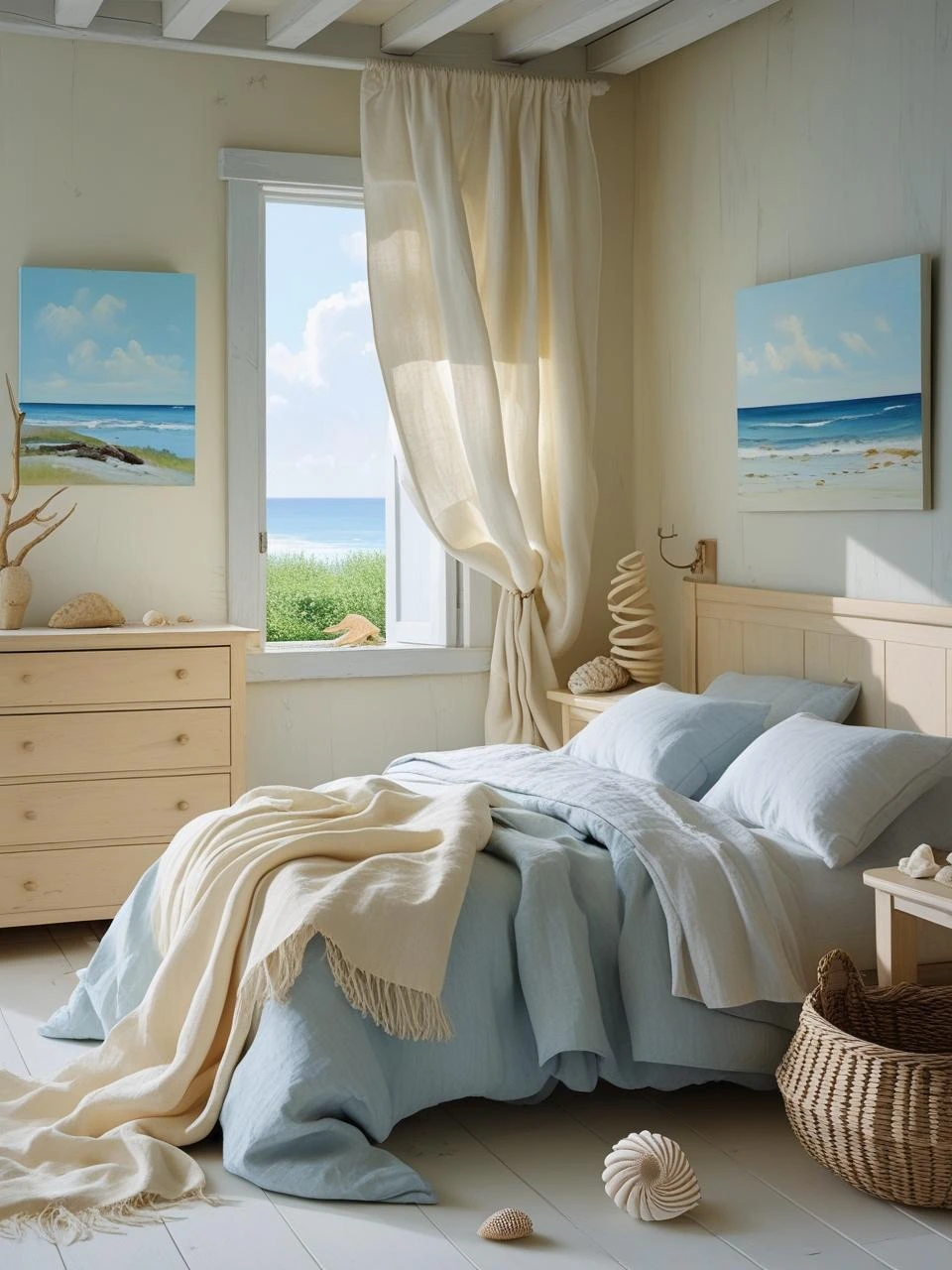
Coastal bedrooms aren’t made in a day. They grow slowly. You might find a better throw months later or swap out the art after a walk on the beach. That’s part of the beauty.
Like the ocean, your room should change a little over time. Don’t rush it. Let it shift with your life. That’s what gives it soul.
Conclusion
A coastal bedroom is not about seashells, signs, or being trendy. It’s about feeling calm, open, and connected to something deeper. When done right, it doesn’t feel decorated—it feels natural.
The sea doesn’t beg for attention. It whispers, flows, and holds space. Your room should too.
FAQs
How can I make a coastal bedroom without living near the beach?
Focus on soft colors, natural textures, and good light. You don’t need ocean views to feel coastal—you just need the feeling of peace the ocean brings.
What colors work best for a coastal bedroom?
Off-white, beige, pale blue, and soft gray are best. These shades mimic the coast without feeling forced or fake.
Can I use bold colors in a coastal bedroom?
Only in small doses. Let bold colors act like seashells in the sand—pretty but rare.
What’s the difference between coastal and nautical?
Coastal is calm, soft, and natural. Nautical is bold, themed, and often full of anchors and ropes. Stick to coastal for a timeless, peaceful look.

